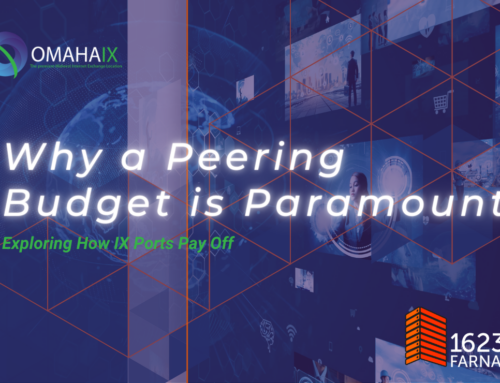Recession rumors are capable of striking fear into the heart of any business. After all, you and your teams put a lot of blood, sweat, and tears into your digital transformations, and you’ve put a significant amount of care into helping your bottom lines keep pace with your ongoing needs for evolution. To see any of that vanish amid an economic collapse would be a shame (to put it lightly.)
When it comes to the next Great Recession, experts across the financial and economic spheres may fall anywhere on the spectrum of “we’re confident it will happen” to “no need to worry”, but nobody can afford to take chances these days. So, how can organizations ensure that they stay in the green?
Despite the growing costs of IT that businesses face in an increasingly technological world, there are ways to optimize IT frameworks so that they are as cost-effective as possible. In fact, the Internet Exchange (IX) will likely be an important asset for financially minded businesses going forward.
The Cost of Connectivity
If you’ve had an eye on your connectivity for a while now, you’re probably familiar with IP transit — the method of paying an upstream provider to carry traffic to its destination. The good news is that IP transit costs are on a downward trend. In fact, IP transit transactions (expressed as unit price per Mbps) were around $0.09 per Mbps per month in Q2 2021. However, as data demands remain on the rise, the cost of sending more and more data along these pipelines means that costs can still climb beyond what a company feels comfortable paying. The bad news is, if you’re still using IP transit, you’re still not getting the most cost and performance-optimized solution possible.
Peering at an IX delivers the cost-effective connectivity that today’s businesses thrive on — with the added control that today’s data-hungry, high-performance apps require. In the days when a recession may be around the corner, cutting out the costs of a middleman has never felt better. This is precisely what peering allows organizations to do. Peering enables networks to connect directly to avert costs associated with third-party transit providers, which means lower transit costs. The only costs associated with interconnection of this type are the cost of the physical link and space in the connected facility — in other words, it’s settlement-free.
Still, let’s not forget that time is money. Not only are businesses reducing costs directly by peering, but they’re also optimizing their connectivity and control over traffic, which avoids transit mishaps that can damage bottom lines. These mishaps include sending traffic in indirect routes, encountering congestion along the connections, adding latency, and impacting connectivity quality. In the end, streamlining the IT footprint in this way adds many financial and strategic benefits.
Building Confidence in Your Connection Costs
At OmahaIX, we recently surveyed our ecosystem to determine where our strengths were and where we could deliver even more value. We’re proud to say that, according to our respondents, cost savings and better connectivity were the top two benefits of peering at Omaha IX. Our community of peers notes that the main benefits of being a part of this ecosystem were “cost savings,” “saving money on IP transit,” and “better routes”. These responses may seem simple, but they have significant impacts when considering the foundational importance of business networking and getting data where it needs to go effectively.
Recent peering partner upgrades have seen Omaha IX’s peering traffic almost double over the past two months (take a look at current traffic graphs here. With this in mind, it might be time to join the over 50 peering partners at Omaha IX today and start realizing additional efficiencies within your organization.
The business and economic landscape will always have periods of uncertainty, and yes, maybe even recession, but having a trusted partner that is always on your side is invaluable for maintaining confidence in your IT. That’s what we strive to be for your business and its connectivity.
We’re here to help you feel assured by your network and its ability to function cost-effectively — no matter how your world changes. To learn more, take a look at our services.



